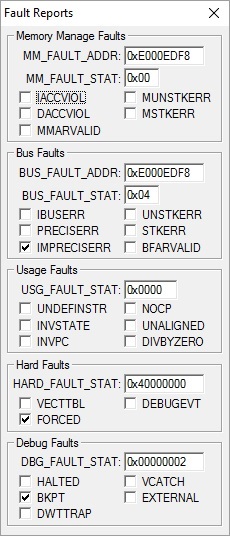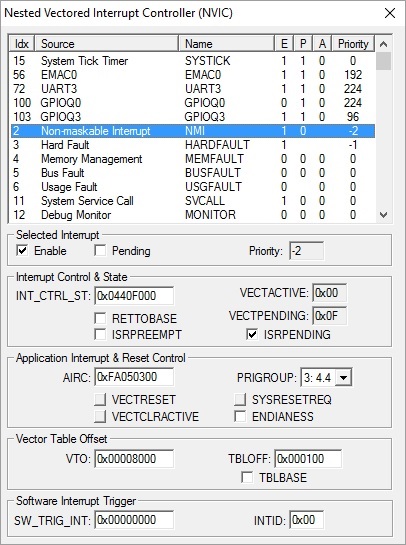Hi,
Hi, I'm running code on Cortex TM4C129ENCPDT.
Our boot loader runs and make a jump to address 0x8000 where our application resides.
our application/main.c runs until I enable interrupts (call to IntMasterEnable() ) and immediately after, I jump to hard fault handler.
If I disable our boot loader/Ethernet configuration, our application runs fine. This is telling me that there is no problem with the Ethernet interrupts that are waiting to be serviced.
I tried disabling all interrupts and clearing pending interrupts after the jump to 0x8000 in our application/main( ) but no success:
- SysCtlPeripheralReset( ) for all peripherals
- IntDisable( ) for all interrupts
- IntPendClear( ) for all interrupts
I have included extract of the boot loader main( ) and the application main( ).
//extract of our main.c
int main(void) {
IntMasterDisable();
SystemInit(); //clock and system setup
GPIO_Init(); //setup GPIO
IntMasterEnable(); //goes into hard fault AFTER this instruction
os_sys_init(taskInit);
}
//extract of our bootloader
int main.c(void) {
IntMasterDisable( );
SystemInit(); //set's gSysCtlClock
GPIO_Init();
EnetReconfig(gSysCtlClock); //from boot_loader/bl_emac.c
//bootloader code goes here ...
HWREG(NVIC_VTABLE) = 0x8000;
jump_to_application();
}
//jump to application
__asm void jump_to_application(void) {
ldr r1, [r0]
mov sp, r1
ldr r0, [r0, #4]
bx r0
}
What Am I missing?
Khaled.



